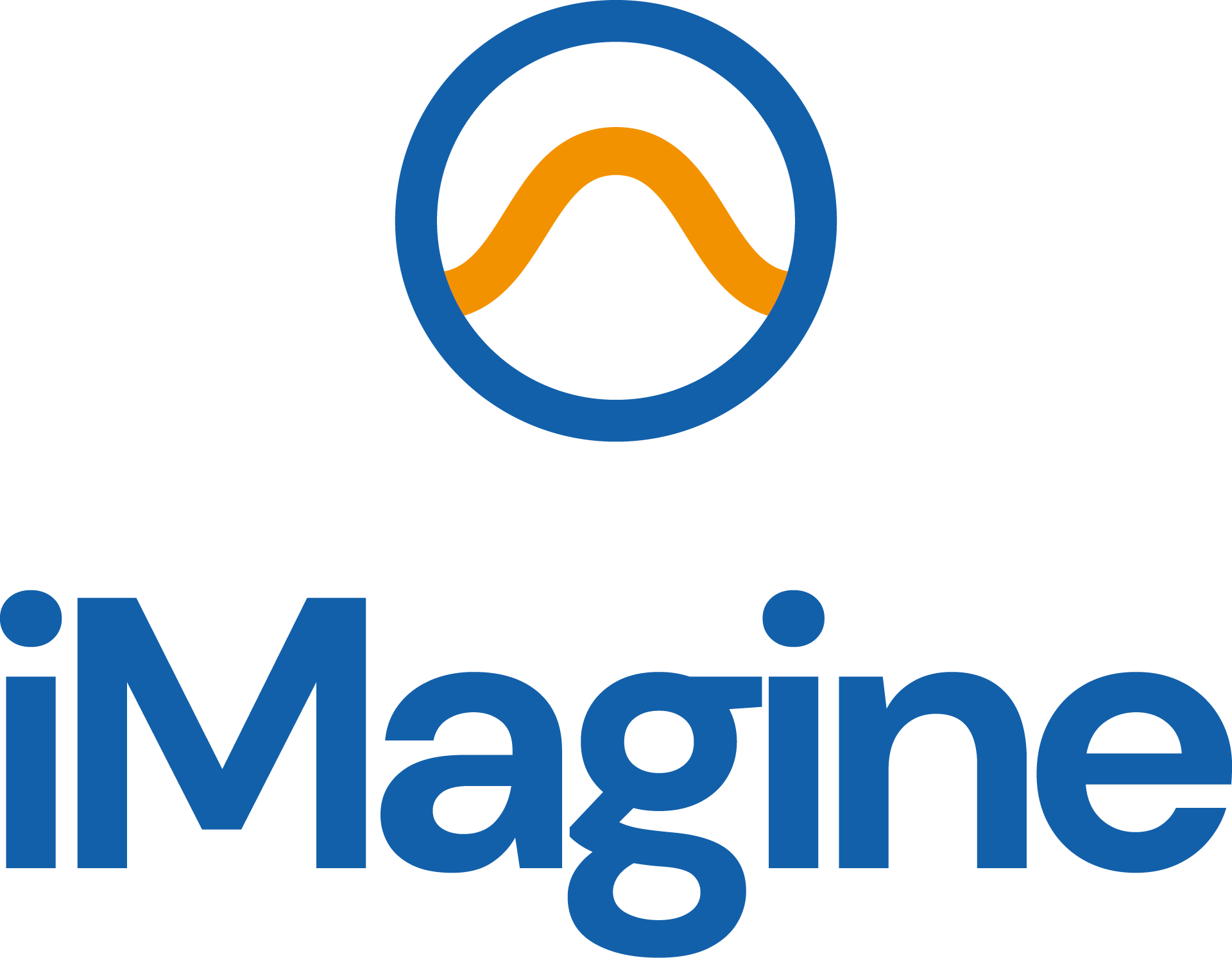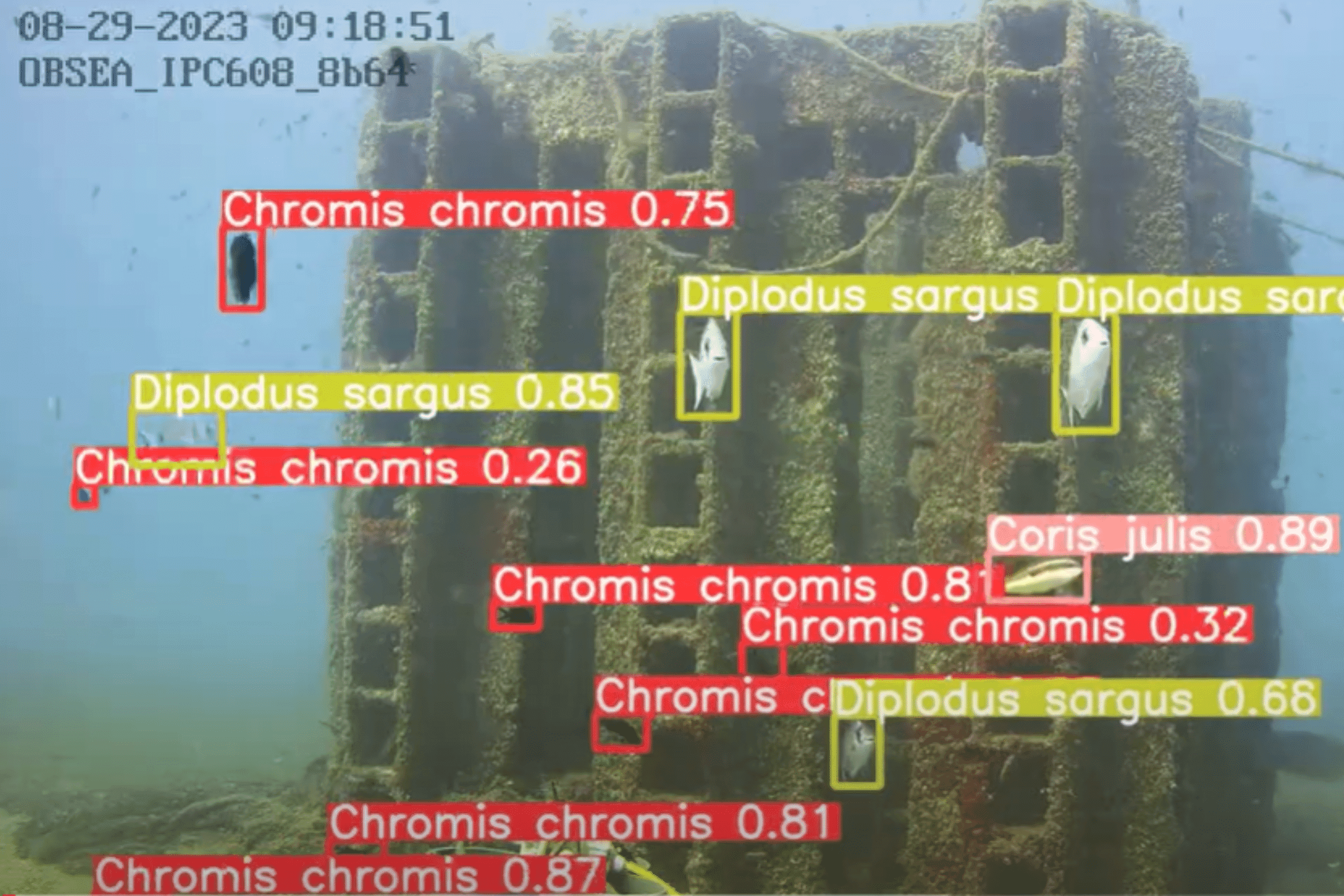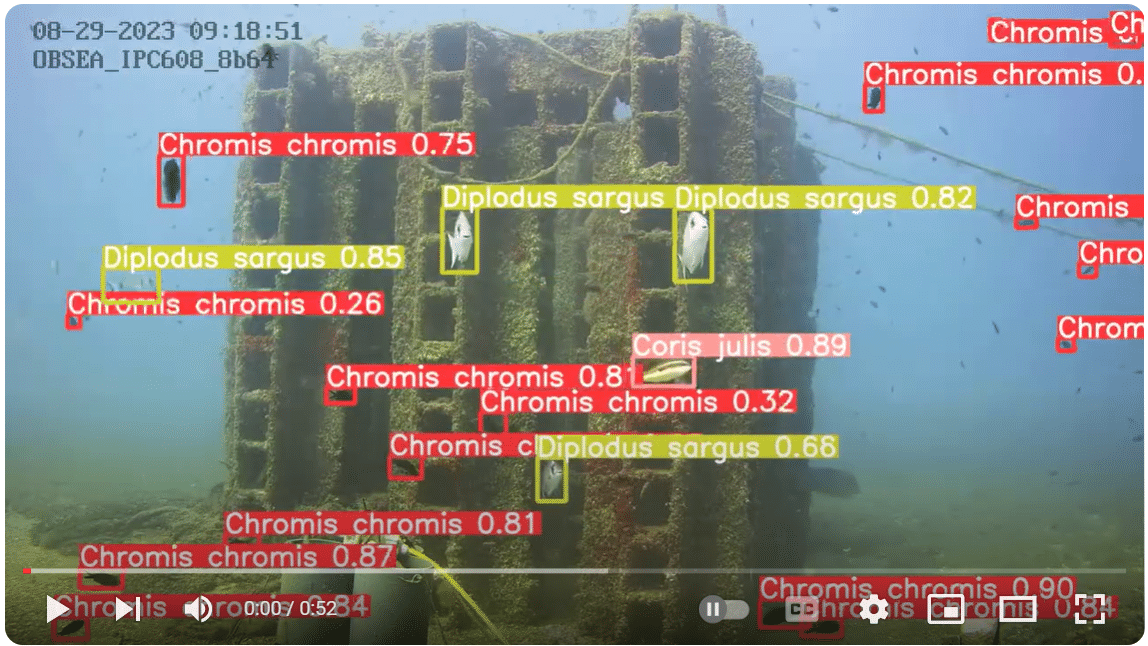OBSEA is an underwater observatory in the area of Barcelona which collects images of various fish species. However, identifying fish species with the manual analysis of the extensive image dataset is time-consuming; moreover, analysing only a subset of the whole dataset would imply losing important information.
AI tools applied to the fish images allow for extracting valuable biological content and creating derived datasets that marine scientists can use to draw ecological conclusions. Participating in the iMagine project and utilising the iMagine platform, a Deep Learning service has been trained and deployed to obtain species abundance data from existing and future images. These derived datasets will be crucial for studying species presence or absence over time and understanding changes in abundance concerning environmental parameters, providing insights into the impact of climate change on the local fish community.




